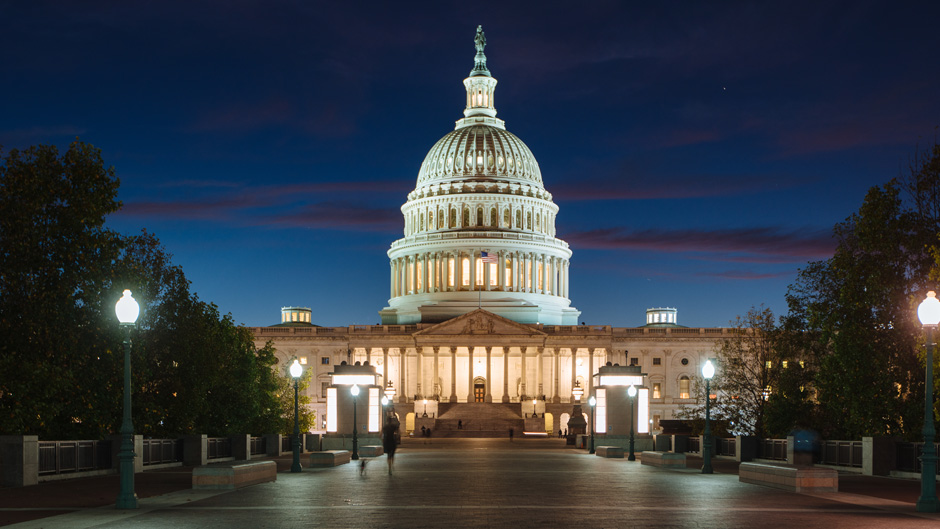Tuesday night President Donald Trump will walk through the U.S. House of Representatives chamber, ascend the dais, and give a speech that has become a central ritual of modern politics: the State of the Union address. These addresses have a long history in American politics and have become a modern ritual in the nation’s capital. This year’s address, like the current president, may be surprising.
Background
The U.S. Constitution states that the president “shall from time to time give to the Congress Information of the State of the Union, and recommend to their consideration such measures as he shall judge necessary and expedient.” The first two U.S. presidents, Washington and Adams, presented their ideas for congressional action in speeches to Congress. From 1801 to 1913, presidents sent written addresses to Congress instead, until Woodrow Wilson revived the tradition of presidential speeches to Congress.
The modern State of the Union (SOTU) address is a prime opportunity for presidents to highlight past successes, frame current policy debates, and propose future actions in domestic and foreign policy. The speeches often feature planned applause lines and recognition of key guests. Opposition parties strategize how much they will display support or opposition to the address. Since 1966, the opposition party has offered a televised response to the president’s address, including Florida’s Sen. Marco Rubio in 2013. In 2011, then-Rep. Ileana Ros-Lehtinen gave the first response speech in Spanish, in addition to Paul Ryan’s English-language response. This year’s responses will be made by Stacey Abrams, 2018 Democratic candidate for governor in Georgia (English), and Xavier Becerra, attorney general of California (Spanish).
Behind the scenes, SOTU addresses play an important role in helping the president coordinate the priorities of the executive branch. Each agency (and members of Congress) competes for its priority issues to be included in the SOTU, so as the president and his staff decide whether to include an issue in the address they are also deciding which issues are important to them. As a result, SOTU speeches often begin with grand rhetoric, but eventually turn into a list of policy pronouncements representing the fruits of this competition for the president’s attention.
Questions about the 2019 Address
- When will it happen? This year’s address was originally scheduled for Jan. 29, but Nancy Pelosi, the Speaker of the House, rescheduled the address in a series of public letters between the speaker and Trump. Speaker Pelosi was concerned that the address should not and could not be held during a government shutdown. She urged the president to submit a written address, or to reschedule the speech after the government was funded.
- Will the president give a conventional speech or focus on immigration? Over the last three months, the president has focused on his proposal to build a physical structure for the entire length of the U.S. border with Mexico, making “the Wall” and caravans of Central Americans traveling to the border to seek asylum his focus during the 2018 election campaign. This was the key issue behind the partial government shutdown and a national address just four weeks ago. The president may maintain this focus on reducing immigration, or present a broad-based survey of domestic and foreign policy topics.
- What will the president say about the ballooning federal deficit? Predictably, the combination of increased defense spending and corporate tax cuts has led to increasing deficits. The Republican Party in Congress was committed to reducing government spending during the Obama administration, so one might expect the president to present a plan to restructure the federal budget.
- Will the president maintain his plans to withdraw U.S. forces from Syria and Iraq? President Trump’s announcement of U.S troop withdrawal led to the protest resignation of the Secretary of Defense. Last week the heads of U.S. intelligence agencies testified before Congress that withdrawal could lead to the revival of the Islamic State (ISIS) forces, and the U.S. Senate voted against the withdrawal by a 68-23 margin.
- Will President Trump identify areas for bipartisan cooperation over the next two years, or signal a strategy of executive actions and partisan confrontation? After two years of working with Republican majorities in both chambers of Congress, President Trump now must work with—or fight against—a Democratic majority in the U.S. House led by Pelosi. Trump might use the SOTU to identify areas of potential cooperation between the parties, or he could signal his intention to rail against Democratic policies and use the executive powers of the president to advance his agenda without Congressional support.
Gregory Koger is a professor of political science at the University of Miami College of Arts and Sciences.

